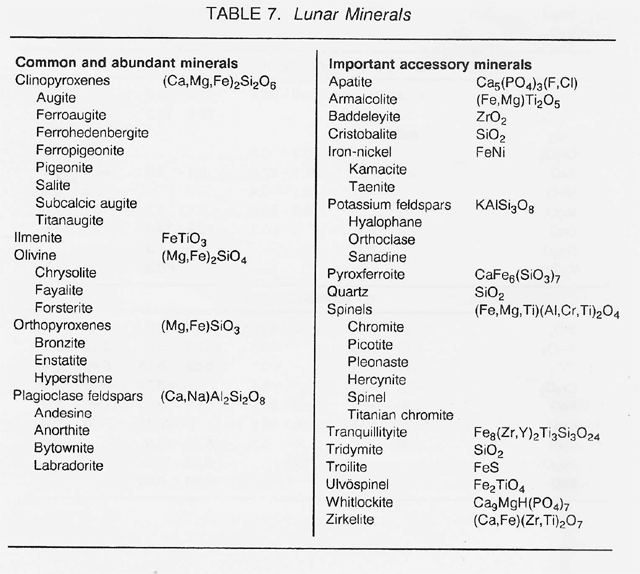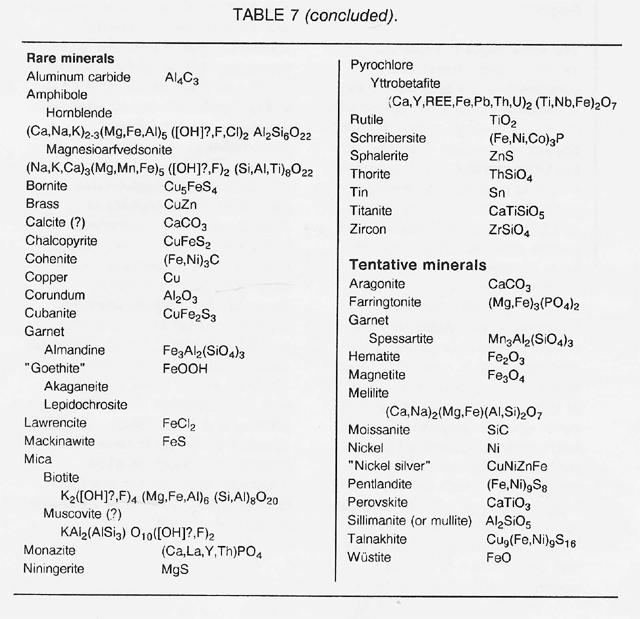
Minerals: The number of mineral species positively identified on the Moon is 70, with 14 others tentatively identified (table 7) (Levinson and Taylor 1971, Frondel 1975, Warren et al. 1983b, Meyer and Yang 1988), which is less than 2 percent of the mineral species known on Earth (Fleischer 198(),c" However, less than 2 percent of the 3800 mineral species known on Earth makes up more than 95 percent of the commercially exploitable mineral deposits on Earth. These may be divided intd those that can be used in their natural state, either singularly or combined with others to form a rock, and those that must be refined. Of the known lunar minerals, a maximum of one-sixth have" early" exploitation potential These are apatite, armalcolite, chromite, "goethite," ilmenite, iron-nickel, olivine, plagioclase feldspars, potassium feldspars, and whitlockite (table 7). But of these only ilmenite, plagioclase feldspars, and possibly "goethite" are very likely to be exploited early (McKay and Williams 1979). These minerals could be used to produce oxygen, structural metals (aluminum, iron, and titanium), and water, and they seem to occur in concentrations high enough to warrant exploitation. Apatite, potassium feldspars, and whitlockite are important raw materials in the production of fertilizers for growing plants on the Moon, but they may not be present in high enough concentrations to be easily exploited.

